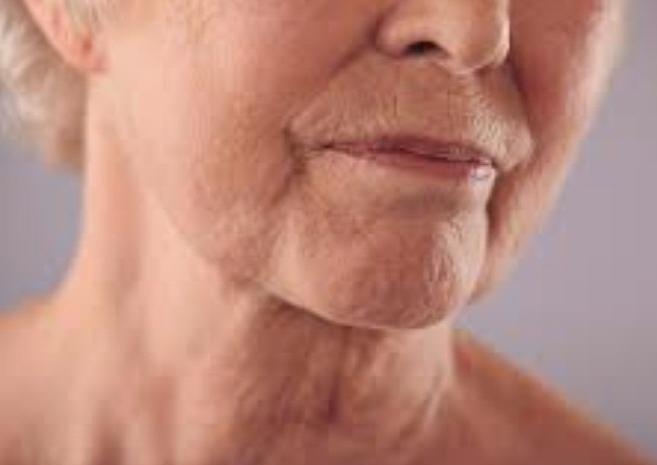Whether it’s microneedling, laser resurfacing, chemical peels, or other rejuvenating skin procedures, these treatments are designed to trigger renewal by creating controlled micro-injuries. The real transformation happens after the session, during the healing period. This recovery phase is when new collagen forms, damaged tissue repairs, and the skin barrier strengthens. The right post-treatment skincare can shorten downtime, minimize discomfort, and enhance results. One ingredient that has gained attention for its regenerative benefits is PDRN toner.
What is PDRN? A Science-Backed Ingredient for Skin Repair
PDRN stands for Polydeoxyribonucleotide, a DNA-based compound most often extracted from salmon. Its regenerative qualities have been studied for decades, with research showing that PDRN can support wound healing, reduce inflammation, and improve tissue repair.
Key skin-recovery benefits of PDRN:
-
Stimulates cellular regeneration to replace damaged skin cells with healthy ones.
-
Boosts collagen and elastin production, essential for firmness and flexibility.
-
Reduces inflammation to help calm redness and swelling after procedures.
-
Supports skin hydration and strengthens the barrier to prevent moisture loss.
Because it works on a cellular level, PDRN isn’t just about cosmetic improvement — it provides a supportive environment for skin that’s actively healing.
How PDRN Supports Skin Regeneration After Treatments
1. Accelerating Cell Renewal
PDRN encourages fibroblasts — specialized cells that produce collagen — to work more efficiently. This is critical after treatments that intentionally disrupt the skin’s surface.
2. Regulating Inflammation
While inflammation is a natural healing response, excessive redness and swelling can delay recovery. PDRN helps modulate this process, balancing repair with comfort.
3. Strengthening the Skin’s Structure
Collagen and elastin are the building blocks of youthful, resilient skin. PDRN helps rebuild these fibers faster, improving texture and firmness after treatment.
4. Improving Hydration and Barrier Function
Post-procedure skin often struggles to retain moisture. PDRN toner can help seal in hydration and reinforce the protective barrier, reducing dryness and flaking.
The Role of PDRN Toner in Post-Treatment Care
PDRN toner fits into a recovery routine as a hydrating and restorative step that can be applied after gentle cleansing. It prepares the skin to absorb additional soothing and protective products while delivering active repair-supporting compounds directly to the surface.
When applied regularly, it can:
-
Keep skin comfortable while it’s more sensitive.
-
Provide a cooling, soothing effect.
-
Reduce visible downtime by speeding up the renewal process.
-
Support a smoother transition from treatment to fully healed skin.
Post-Treatment Application by Procedure Type
The timing and frequency of PDRN toner use depend on the type of treatment and the skin’s condition:
-
Microneedling – Apply when the skin is ready for topicals, usually within 24 hours, to reduce redness and aid repair.
-
Laser Resurfacing – Use as the skin starts to recover from heat exposure, helping to maintain hydration and calm irritation.
-
Chemical Peels – Introduce as the peeling phase begins to keep skin hydrated and comfortable.
-
Minor Dermatological Procedures – Can be applied to the surrounding skin (avoiding open wounds) to improve resilience.
Best Practices for Using PDRN Toner After Skin Treatments
-
Start Slowly – Introduce once daily, increasing to twice daily as tolerated.
-
Layer Wisely – Apply before heavier serums or creams to allow maximum absorption.
-
Pair with Sun Protection – Renewed skin is more vulnerable to UV damage; daily SPF is essential.
-
Avoid Irritants – Skip strong acids, high-strength retinoids, or exfoliating scrubs until skin has fully recovered.
-
Listen to Your Skin – If irritation occurs, reduce frequency and consult a professional.
Safety and Considerations
While PDRN toner is generally well tolerated, there are important precautions:
-
Those allergic to fish or salmon DNA sources should avoid it.
-
Individuals who are pregnant or breastfeeding should consult a professional before starting.
-
Mild temporary redness or tingling can occur during initial use.
-
Product authenticity matters — only use verified sources to avoid contamination or substandard formulations.
Selecting a Quality PDRN Toner
For optimal results, look for:
-
High purity – A clearly stated percentage of PDRN in the ingredients list.
-
Gentle formulation – Free from alcohol, synthetic fragrance, and harsh acids.
-
Safe packaging – Airtight or single-use packaging to protect the active ingredient.
-
Transparent sourcing – Reputable brands that disclose origin and processing details.
Building a Recovery-Friendly Routine
PDRN toner works best as part of a complete aftercare plan. A recovery-friendly routine might include:
-
Gentle, pH-balanced cleanser to remove impurities without stripping the skin.
-
PDRN toner to hydrate and support regeneration.
-
Barrier cream or hydrating serum to lock in moisture.
-
Broad-spectrum SPF to protect vulnerable skin from UV damage.
Consistency is key — using these steps daily supports both short-term healing and long-term skin health.
Why PDRN Toner Stands Out for Post-Treatment Recovery
Many hydrating toners focus solely on moisture, but PDRN brings a repair-driven approach. Its combination of hydration, inflammation control, and collagen support makes it well-suited for the delicate recovery window after professional skin treatments.
Because it works on multiple fronts — comfort, structure, and moisture balance — PDRN toner can help the skin look and feel its best sooner.
Long-Term Benefits Beyond Recovery
While PDRN toner is particularly helpful after treatments, its regenerative properties can also support:
-
Ongoing skin maintenance for improved elasticity and resilience.
-
Age-related skin changes help to counter thinning and dryness.
-
Post-sun exposure care to calm and restore the skin barrier.
This versatility makes it valuable not just as a recovery product but as part of a regular skincare regimen.
Key Takeaways
-
PDRN toner is a DNA-based skincare ingredient known for stimulating regeneration, reducing inflammation, and improving hydration.
-
It is especially effective in the post-treatment recovery phase, helping to minimize downtime and enhance results.
-
Choosing a high-quality formulation and integrating it into a gentle recovery routine maximizes its benefits.
-
With consistent use, it can support both immediate healing and long-term skin health.
By focusing on repair, resilience, and comfort, PDRN toner helps make the post-treatment journey smoother and the final results even better.
Reference Links:
-
ScienceDirect – https://www.sciencedirect.com/science/article/pii/S2096691122000723
-
NewBeauty – https://www.newbeauty.com/polynucleotides-pdrn-salmon-dna-products-and-treatments/
-
Vogue Singapore – https://vogue.sg/pdrn-skincare-ingredient/
-
DermaSpa – https://dermaspa.ca/the-power-of-pdrn-a-regenerative-boost-for-skin-healing-and-radiance/



